Monthly (Comic) Book Club - January - Marvels/Eye of the Camera16596
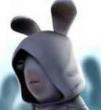 COLLECTOR COLLECTOR
|
dielinfinite private msg quote post Address this user | |
Monthly (Comic) Book Club - January - Marvels & Marvels: Eye of the Camera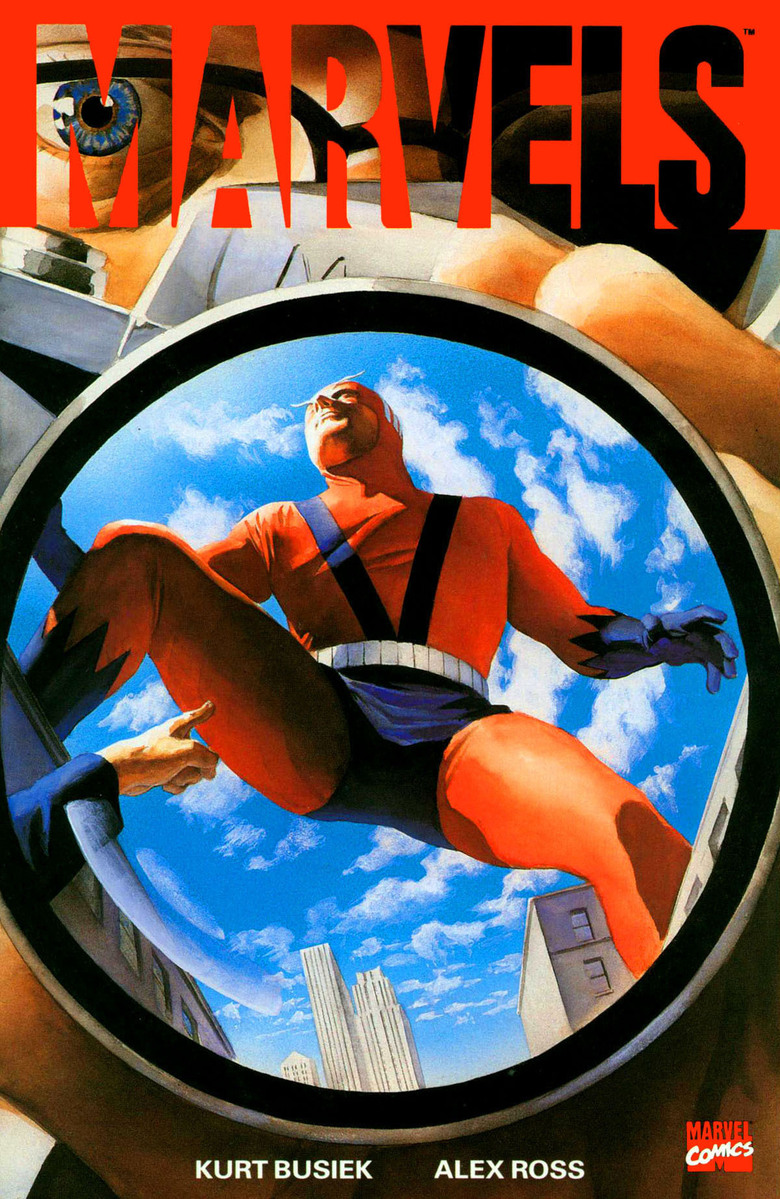  Marvels #0-4 Marvels: Eye of the Camera #1-6 Week 1 (1/3-1/9): Marvels #0-2 Week 2 (1/10-1/16): Marvels #3-4 Week 3 (11/17-1/23): Marvels: Eye of the Camera #1-3 Week 3 (11/24-1/30): Marvels: Eye of the Camera #4-6 Discussion topic ideas: * Thoughts on the story or artwork * Details in the story, artwork, or presentation * References to outside events or other works of fiction * Making of/Behind the Scenes details * Editions you will be reading from * Items in your collection pertaining to this week’s selection |
||
| Post 1 • IP flag post | ||
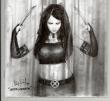 If the viagra is working you should be well over a 9.8. If the viagra is working you should be well over a 9.8.
|
xkonk private msg quote post Address this user | |
| I haven't read Marvels before, but I really enjoy Alex Ross' art. I have a couple of his book collections so I'm sure I've seen some covers and panels before. Looking forward to it. I wonder how well the second series will capture that photorealistic effect. Ross isn't the only person who does it, of course, but I think of him as the primary practitioner right now. |
||
| Post 2 • IP flag post | ||
 If the viagra is working you should be well over a 9.8. If the viagra is working you should be well over a 9.8.
|
xkonk private msg quote post Address this user | |
| Marvels 0 starts with a Mary Shelley quote from Frankenstein, which is appropriate for the story of the creation of the original Human Torch. The story, as presented here (I've never read the originals from the 40s), seems very parallel. Dr. Horton creates the Torch, but because of some flaw it bursts into flame when in contact with oxygen. Just like Frankenstein's creature, its appearance causes immediate distrust and outrage from people. Unlike the creature, the Torch is stored away to learn about the world remotely. The Torch describes this time as 'virtually lifeless', but also seems to be extremely aware of its state. The Torch seems to feel some of the same resentment that the creature did, and when the opportunity for freedom arrives, the Torch runs off. I haven't read the series before, but I know that Marvels is supposed to be from the perspective of the press, or the 'man on the streets'. It's interesting then that this issue is all from the Torch's perspective. I wonder if that's to provide some counterbalance? Or maybe it was just to help fill in the issue, since it was mostly an "extras" issue after the series finished. |
||
| Post 3 • IP flag post | ||
 COLLECTOR COLLECTOR
|
dielinfinite private msg quote post Address this user | |
| I need to dig up the recent annotated reprints. I’ve read both series before but it will be interesting to see if the annotations add new insight into the series or if they just reuse existing material. | ||
| Post 4 • IP flag post | ||
 COLLECTOR COLLECTOR
|
dielinfinite private msg quote post Address this user | |
Okay, I dug out my Annotated Marvels. I went for the virgin covers of the original covers.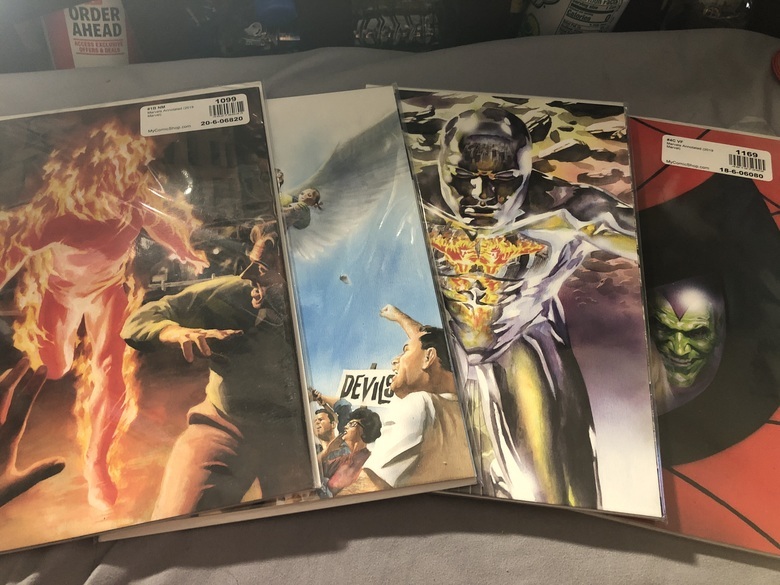 In addition, while digging these out I did find something I’d forgotten about that I think we should add as an optional read: the Marvels Epilogue released a few years ago. Released over 25 years after the end of the original run, it’s obviously not necessary to the story but it’ll be interesting to see how it fits in the context of the rest of the series 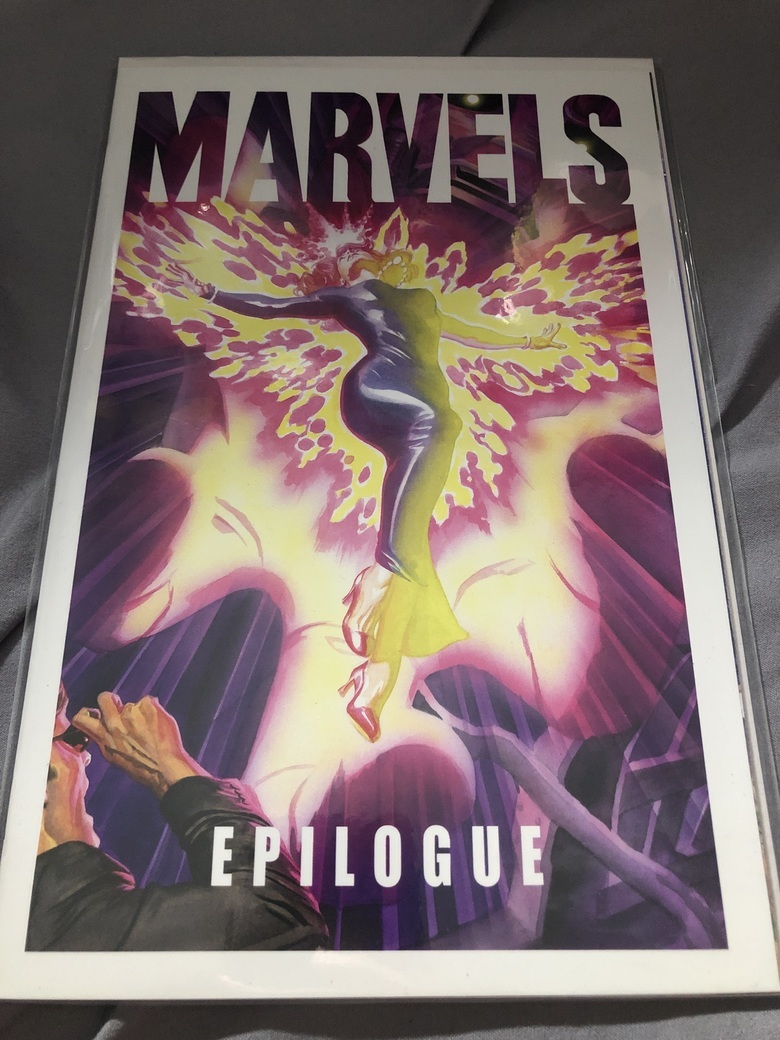 I’ll probably be reading from the 10th Anniversary HC, which includes the various proposals for the series (apparently the idea began as a six issue series. I wonder if any of that material ended up in issue 0 or the epilogue), as well as scripts for all four issues, commentary, behind the scenes, and a concordance sourcing the scenes depicted. I suspect a lot of, if not all the annotations in the annotated editions will be repurposed material already included here. 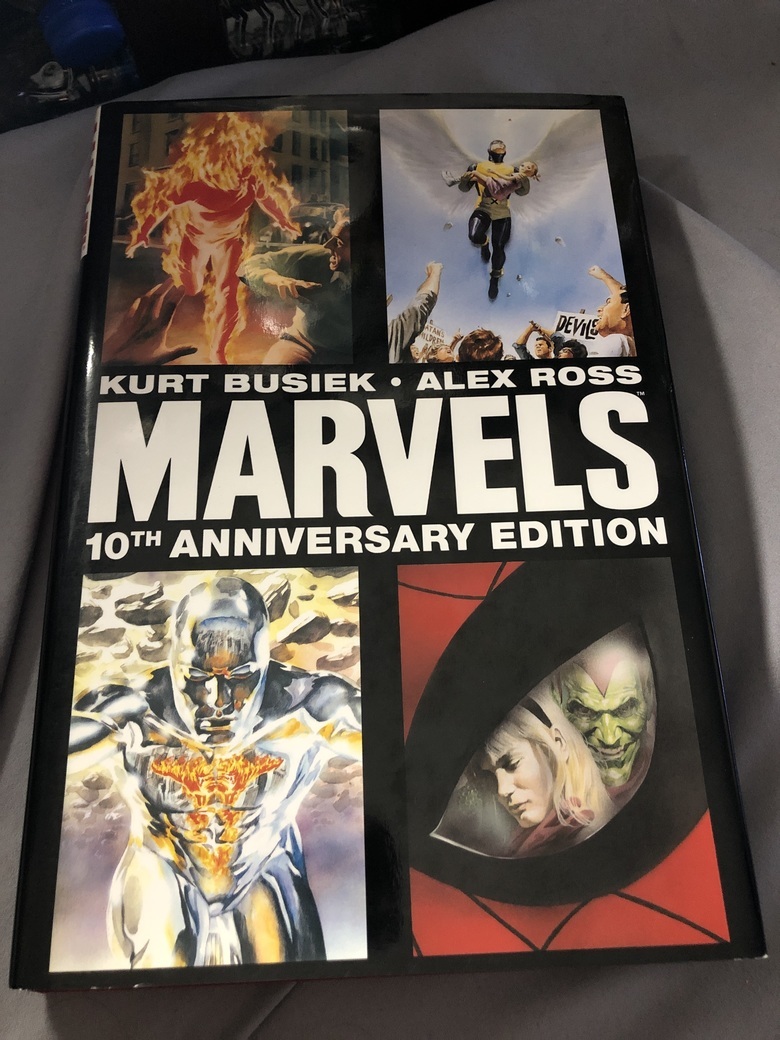 lol, I actually know the exact date I bought the book because it was at Comic Con when I’d won a drawing to get a Stan Lee autograph but I didn’t have anything on me so I went and bought the book. Unfortunately for me, it wasn’t a “you got a ticket so you get a signature” thing. Instead they just kept drawing names until they decided to cut off the line and they cut it off right before me! 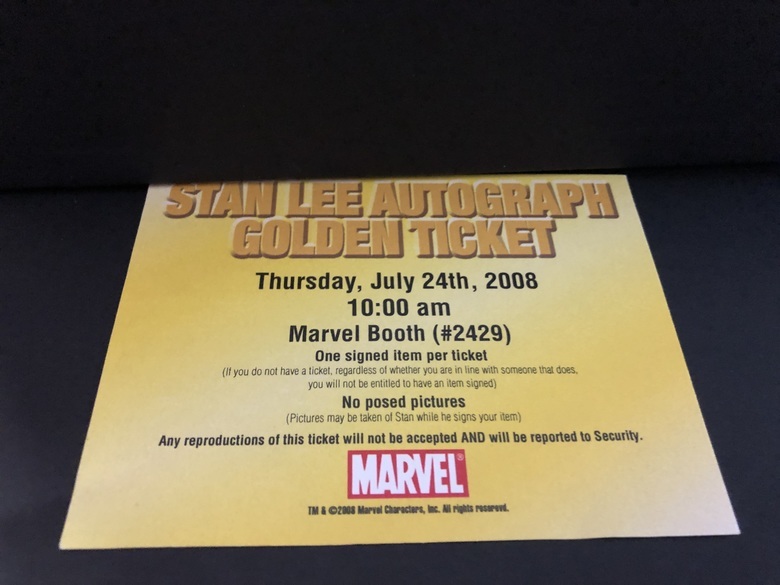 I also have the Graphitti Designs hardcover, which doesn’t have a whole lot of bonus features but it is signed by Ross and Busiek.   Eye of the Camera, not being a landmark title like its predecessor hasn’t gotten nearly as much love in subsequent reprints but I do have the hardcover that I’ll be reading from 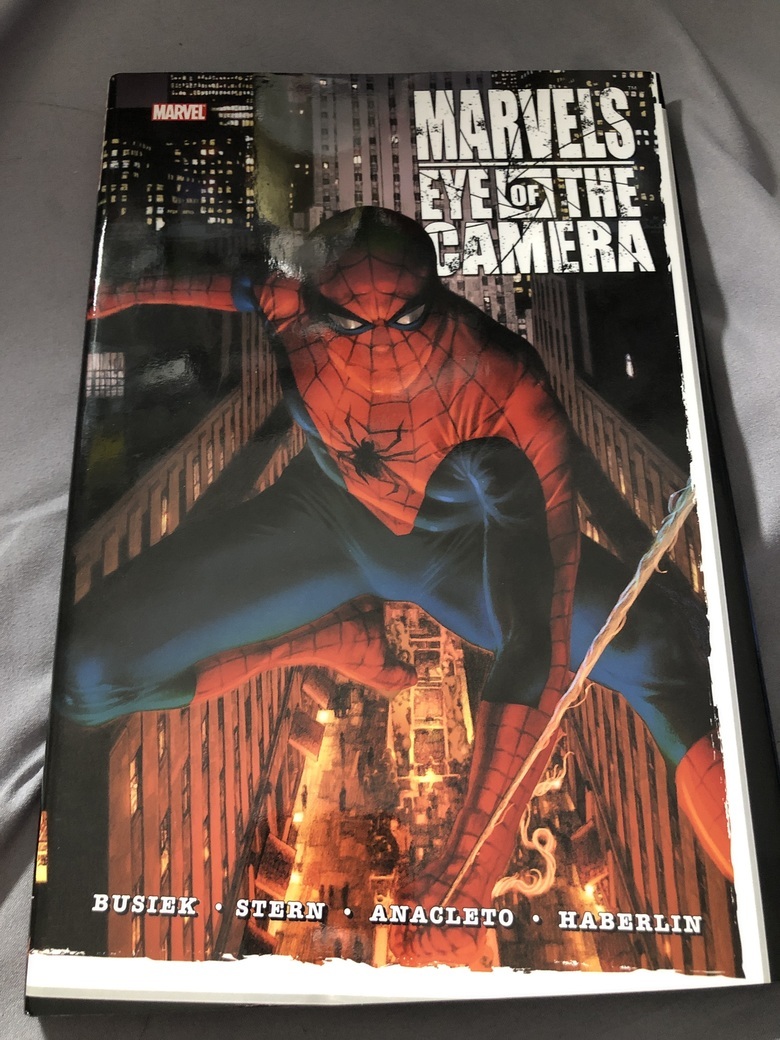 |
||
| Post 5 • IP flag post | ||
 COLLECTOR COLLECTOR
|
dielinfinite private msg quote post Address this user | |
| So Marvels Annotated #1 includes Marvels 0 and I think I know why it is different in style to the rest of the series. This issue was not written by series writer Kurt Busiek. Instead, it is co-written by Alex Ross and Steve Darnell. Also, while Marvels 0 was not published until a short time after the main series had concluded, the story was originally published in Marvel Age 130-133 in November through February of 93/94 so it did appear before the main series was published. I wonder if this was something of a side-project that Ross worked on alongside the main series or if it was already indicated in the proposal. Busiek did write a short introduction for issue 0 but it didn’t say mich about the story, more how he first met Ross and what leas them to the original proposals and mostly referring to issue 0 as a collection of behind the scenes material and only briefly me tioning how the short story helps understand the series a little better so I get the feeling he wasn’t too involved with the story for 0. The annotations on this issue Ross mentions that the plain text over the paintings was an attempt at a more mature storytelling style he felt was needed for the series. This is another stylistic break from the main series which uses more traditional speech bubbles. Some of the other notes mention the attempt to make Professor Horton’s lab look like a scene out of the old Frankenstein film, including a stark, almost black and white look to tie back to the metaphor. In the creation of the Human Torch sequence, Ross wanted to indicate that he was more than a simple robot. While Marvel Comics #1 indicated he was an android, Roy Thomas in his Invaders series has the Torch give a blood transfusion. It seems like to reconcile those two ideas Ross wanted to make the Torch synthetic with man-made systems that make him as human as possible. It also seems that while the Torch being encased in concrete was from the original Marvel Comics, the idea that he was educated through audio recordings came from Roy Thomas and Rich Buckler’s Saga of the Original Human Torch in 1990. So it seems like the story is not just reinterpreting the original stories but also reconciling it with later developments of the character. The three-panel sequence when the Torch first combusts was apparently inspired by a by sequence in Dave Mckean in Arkham Asylum where a man in an electric chair is being electrocuted with the final panel is a photo negative of his screaming face. I’ll have to dig out my copy and see if I can find the sequence Ross is referring to. Finally, two of the reporters at the Torch’s unveiling are meant to be none other than Clark Kent and Lois Lane, which is appropriate as the story seems to be about the birth of the Golden Age, of Marvel, specifically, but of comics as a whole more generally. |
||
| Post 6 • IP flag post | ||
 If the viagra is working you should be well over a 9.8. If the viagra is working you should be well over a 9.8.
|
xkonk private msg quote post Address this user | |
Quote:Originally Posted by dielinfinite I'm up for that. |
||
| Post 7 • IP flag post | ||
 If the viagra is working you should be well over a 9.8. If the viagra is working you should be well over a 9.8.
|
xkonk private msg quote post Address this user | |
Quote:Originally Posted by dielinfinite ouch! |
||
| Post 8 • IP flag post | ||
 If the viagra is working you should be well over a 9.8. If the viagra is working you should be well over a 9.8.
|
xkonk private msg quote post Address this user | |
I'm just reading loose copies of the issues, but here are two Ross books that I have: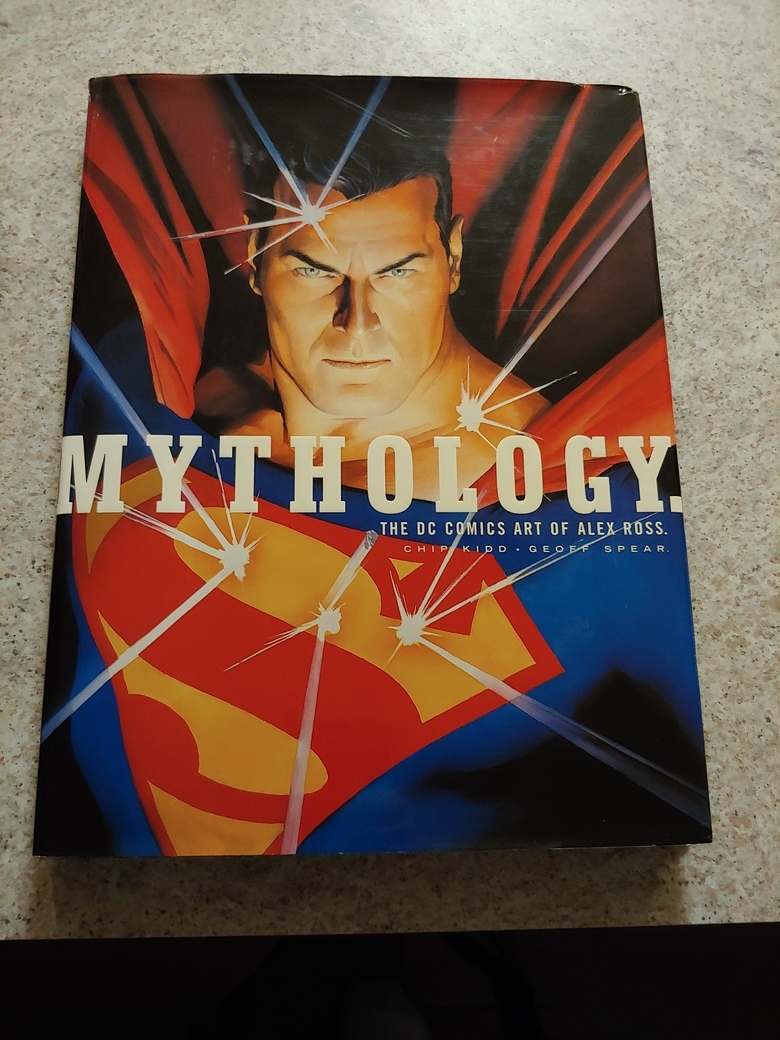 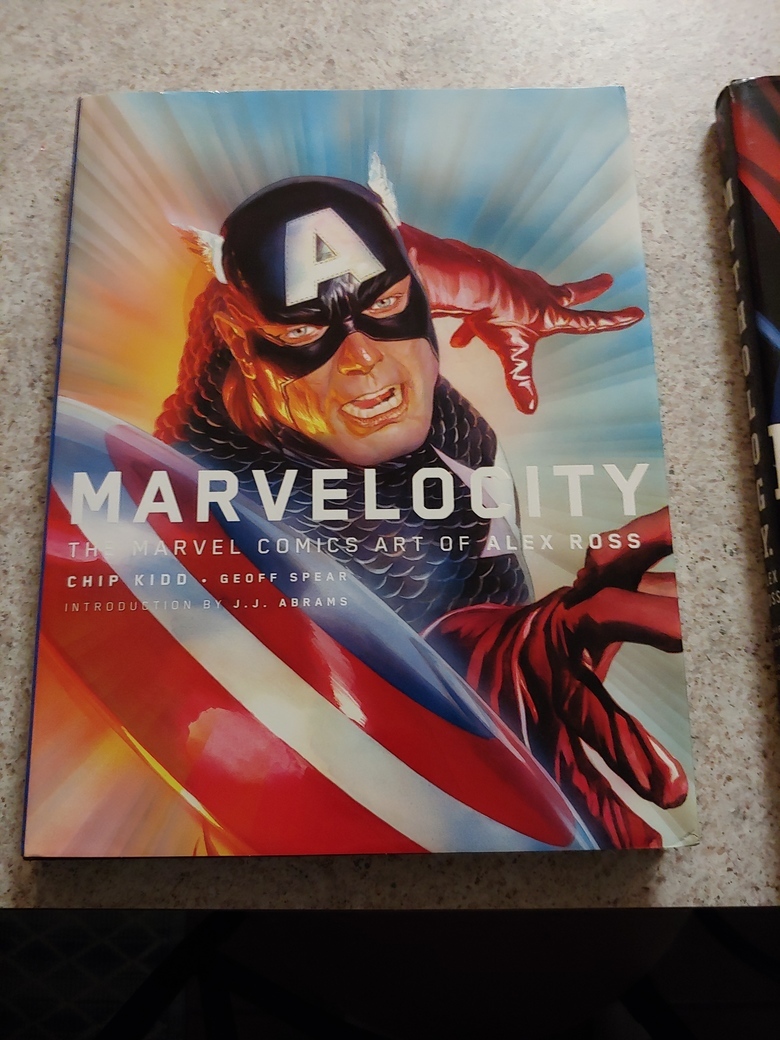 Marvelocity has a section on Marvels, which was basically (if not literally) Ross' first work for Marvel. Some of it is just reprinting key panels/pages, but there's also some background material. 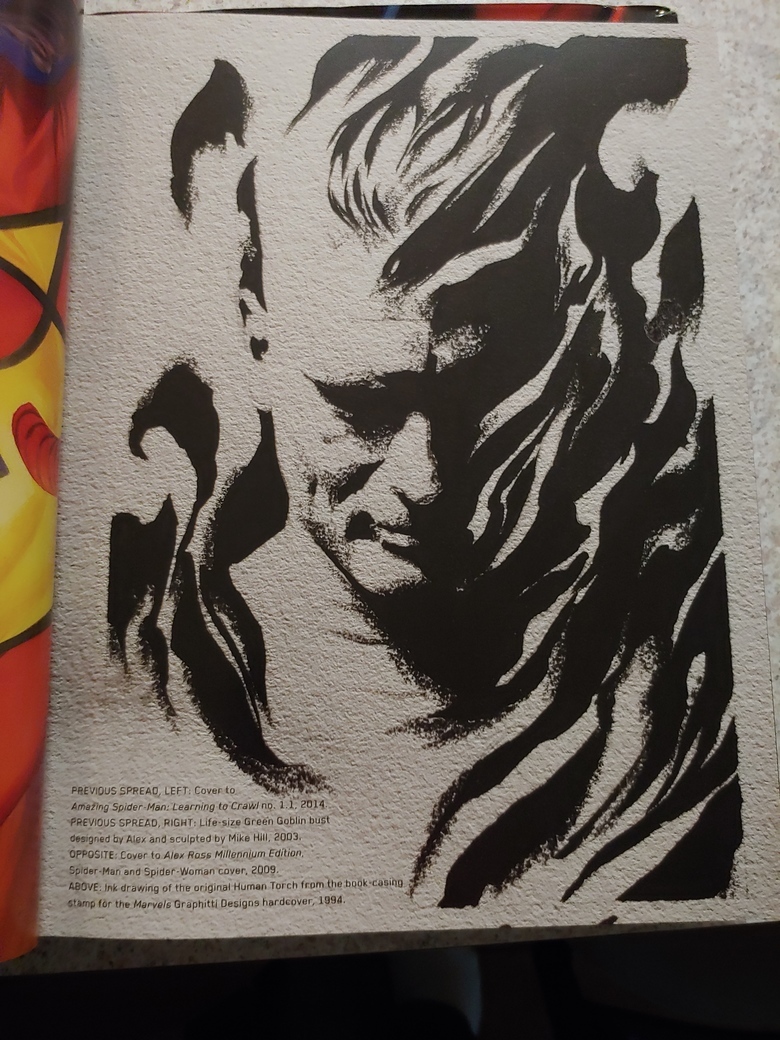 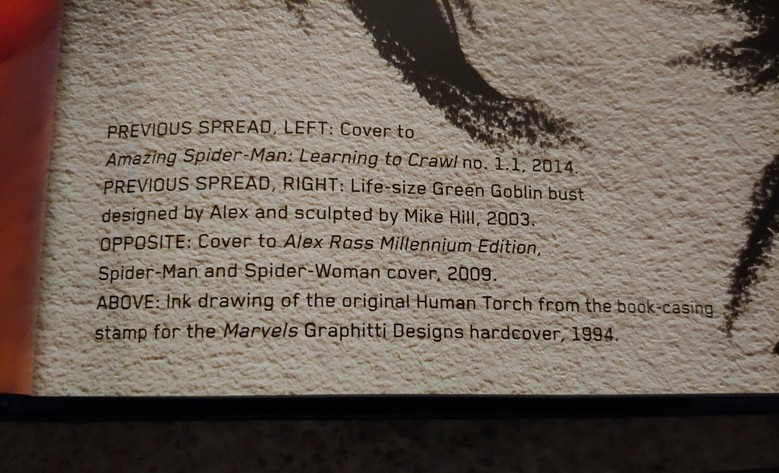 |
||
| Post 9 • IP flag post | ||
 If the viagra is working you should be well over a 9.8. If the viagra is working you should be well over a 9.8.
|
xkonk private msg quote post Address this user | |
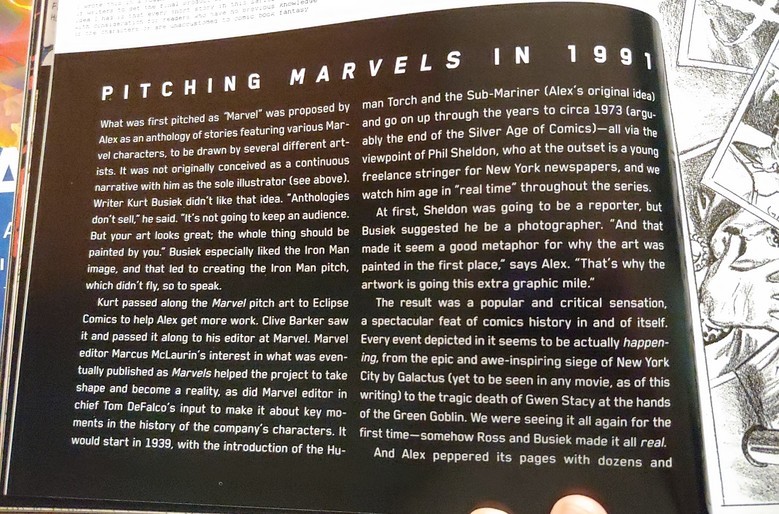  I was only flipping through the book quickly last night to get some pictures, so I didn't see if the Torch was inspired by a bit in Arkham Asylum. But in terms of figuring out how to draw it, Ross definitely used a photo negative. He used his usual style of a model and built it up from there. 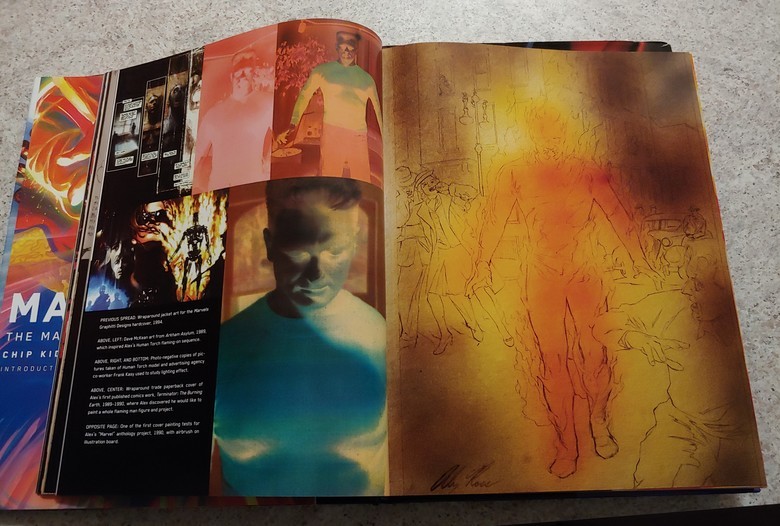 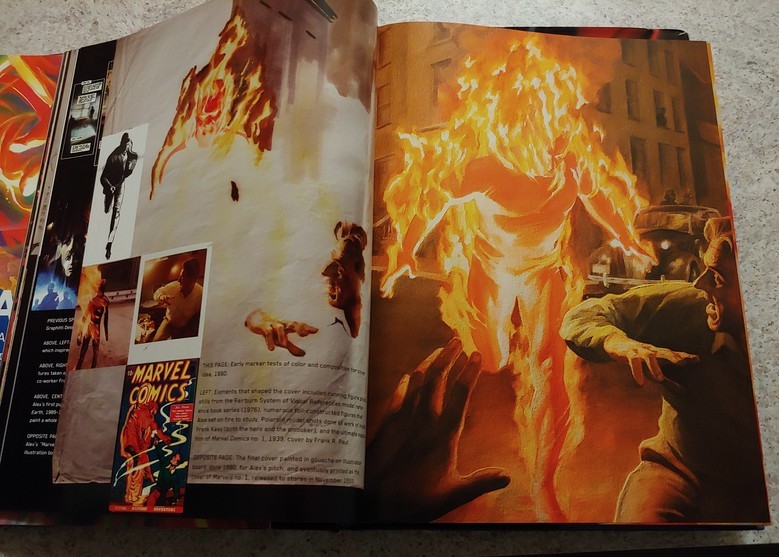  |
||
| Post 10 • IP flag post | ||
 COLLECTOR COLLECTOR
|
dielinfinite private msg quote post Address this user | |
Quote:Originally Posted by xkonk You can see the Arkham Asylum sequence that inspired the Torch’s initial combustion in the top-left corner of that first image |
||
| Post 11 • IP flag post | ||
 If the viagra is working you should be well over a 9.8. If the viagra is working you should be well over a 9.8.
|
xkonk private msg quote post Address this user | |
Quote:Originally Posted by dielinfinite Well, there you go |
||
| Post 12 • IP flag post | ||
 If the viagra is working you should be well over a 9.8. If the viagra is working you should be well over a 9.8.
|
xkonk private msg quote post Address this user | |
| Marvels 1 starts on the photographer/press side, as I thought the framing would be. It's the story of the Human Torch again, but as seen by Phil Sheldon. I think page 6, where the press call the Torch a menace, is where Clark Kent and Lois Lane appear (top panel)? It's hard to say when they're in normal clothes and different artists draw them somewhat differently. Phil's inner monologue provides some interesting thoughts on the press. On the one hand, he seems sad that they ruined Horton's work and had his creation buried in the ground. On the other, he notes that people can dismiss something so fantastical when they see it once; part of the power of the photography is to preserve and validate things (at least until photoshop was invented The story moves on when Phil's fiancee, Doris, witnesses Namor appearing at the waterfront. It's kind of a fun use of the trope of so many superheroes living in New York; Spider-Man can run into Doctor Strange or the Fantastic Four or whoever just by turning the corner, but so can regular people. It doesn't seem like an engaged couple should separately run into two superhumans in different places (what are the odds?), but they can in the comics. The story has a much more ambivalent view of superheroes than your usual Marvel book. Some people are happy that the Torch and Namor are catching bad guys, but other people don't trust them because of the collateral damage or their looks. Phil's newspaper friend (maybe J. Jonah Jameson?) doesn't even like when the Torch delivers medicine. In some places it sounds like jealousy, and in others it sounds like a more reasonable fear of the damage they can do. It's hard for me to read this without thinking of the Civil War storyline, and other similar ideas (the current Devil's Reign also has a superpower ban/registration), and litigating the idea of vigilante superheroes again and again. People applauding Captain America, and then the Torch and Namor at the movies when they fight the Nazis, strikes true though. It's always easier to accept things when they're on your side. In the end, Phil seems to enjoy the marvels around him. It strikes me as part resignation/acceptance and part his own sense of adventure. On the artwork side, I like Ross' interiors. I don't find them as realistic as some of his covers but I guess that's to be expected. It's hard to have the same detail in every little bit of every panel. I liked him putting one of Nick Fury's eyes in shadow, setting up the famous eyepatch he would wear later. And when Ross does have space, like the splash (ha) of Namor's wave hitting New York, they look great. |
||
| Post 13 • IP flag post | ||
 If the viagra is working you should be well over a 9.8. If the viagra is working you should be well over a 9.8.
|
xkonk private msg quote post Address this user | |
| Marvels 2 jumps from the early 1940s to the early 1960s. Phil's looking to put his photos in a book, which sounds probably like Ross trying to pitch his idea for the comic. The 'funny coincidence' I mentioned in issue 1, where the same guy comes across the only two superpowered people in the world in the same week, now happens to New Yorkers all the time. But as much as they seem to appreciate the Avengers, they hate the X-Men. The picture of them in red light was striking; I'm surprised I haven't seen it before. Phil gets caught up in the crowd enough that he throws a brick at Iceman. He, and everyone else, 'knows' that mutants are going to replace humans, because that's what he reads. You'd think that after his experience with the first Human Torch and the press that he'd be a little more skeptical. But he considers mutants to be worse than obvious bad guys - 'The Eel is just a guy in a suit'. Alicia Master's art show has some good touches in Ross' art. Reed and Sue look like old-Hollywood royalty to me. Johnny looks not especially handsome, though; maybe it's just the angle. I also picked out (for people without speaking lines) Norman Osborne, (I think) Peter Parker, and Matt Murdock checking out his own statue. I didn't notice it the first time, but when Alicia is at the wedding I thought she might look like Linda Hamilton. I wonder if that was an inspiration or just my eyes. Phil's big moment comes when he finds out his girls have brought home a little mutant girl, knowing there's a mob outside that he would otherwise be a part of. Comparing the look in her eyes to Auschwitz seems a little Godwin's Law to me, but maybe (at a meta level) Magneto makes it fair game. Then a riot breaks out when Trask reveals his Sentinels on television. Phil's had enough time, and his experience with the mutant girl, to realize that it could just as well be him. I'm a little uncertain of Phil's characterization. There seems to be an arc in both issues where the 'good guys' start out hated or disliked but by the end Phil is at least on board. I can't decide if that's realistic, that one guy would run through all those reactions, or if it's a consequence of having Phil be the audience surrogate who has to fill all those roles. Maybe the last two issues will clear it up. If he learned to love the marvels, and he learned to at least tolerate the mutants, hopefully he shouldn't have any knee-jerk negative reactions to other characters coming down the pike. Of course, with the cover for the next issue being Silver Surfer, I guess you would take a negative stance toward a giant purple guy trying to eat your planet. |
||
| Post 14 • IP flag post | ||
 COLLECTOR COLLECTOR
|
dielinfinite private msg quote post Address this user | |
| So Issue 1 very much feels like the witnessing of a sudden and climactic shift from the status quo in the world as a whole but in the lives of regular every day people. As major as World War II would be, war in general was nothing new. Phil and his friends might even be old enough to remember the Great War/WWI and the way they’re speaking of it with something of a blasé attitude shows they don’t see it as something especially noteworthy. Heck, Phil sees it more as a career opportunity. The story starts in 1939, the year the first “superhero” comic, Action Comics, was released. It starts small, just one person, the Human Torch, and not everyone seems to realize it at the time but it does strike Phil as important even then. Namor is depicted as basically the second “Marvel” and at first both he and the Human Torch are met with fear from the public. Namor was rather hostile at first so that makes sense but even the Human Torch’s first few appearances brought fear to people. The first time he was sealed in glass but it was enough that the press forced him to be locked away. The second time, when Phil spots him running through the streets, it’s not reported that he was attacking anyone but the sight of him caused panic. In many cases the story shows the events after the fact and from a third person, much the way a “real” person would be experiencing it, on tv or in a newspaper, not seeing the event itself but the aftermath and what people are say afterwards. Some people see positives, some people see the obvious negatives. The whole situation puts Phil in a bit of an existential crisis. He feels like “we,” people, aren’t in control of our destiny anymore now that marvelous beings like Namor and the Human Torch exist. He mentions that there were heroes before but those were still human, this new breed were different. This is really where some of Watchmen’s influence creeps in. That work dealt with the appearance of Dr Manhattan, the only super being in a world that had known only humans and how he upset the status quo worldwide. While we saw the aftermath of the Torch and Namor’s earlier minor skirmishes, the next confrontation was far bigger. The conflict, as seen from the point of view of a person on the street, doesn’t come off as an exciting story the way it would have been experienced in the pages of a comic book. Instead, it feels more like watching a natural disaster unfold. No one knows why it is happening but it’s wrecking trains and flooding tunnels. Phil catches glimpses of it on the streets but even he’s only getting fragments as they are reported. In the end, Namor and the Torch make up. No one is at fault but it is still left to regular everyday people to pick up the pieces and rebuild. That whole sotuation leaves Phil feeling small and powerless to fulfill his duty as a husband to protect his wife and so breaks off his engagement. He’s still not aware of how great the shift beneath his feet has been. He thinks it is something that will blow over or fade away. A year later the world still has not settled as a new Marvel, Captain America, appears. Unlike the Torch and Namor, Captain America is embraced by the public. Phil wonders if it’s because he’s very much American doing what much of America feels should be done while the other two were more unpredictable. On a bit of a side note. We do get to see a young, pre-war Nick Fury. He’s not called out by name but he is referred to as “Ma Fury’s boy” and you always see him with his left eye in shadow. As far as continuity goes, Busiek and Ross wanted to capture the Marvel universe that they read in back issues without injecting too much retroactive continuity. So Fury, despite not being created until the early 60s was known to the authors so he got snuck in but characters that were new to authors, despite their adventures setting them in the time frame, like say Wolverine, were generally not included. Anyways, the Marvels’ exploits, as shown in the film reels, succeed in hurrying their acceptance in the minds of the public. Even Phil, who had postponed hi marriage until their time had passed, gets engaged once again knowing that they are more a part of everyday life than ever before. Eventually; the Torch and Namor are at it again, with even greater ferocity this time with Namor apparently conquering nations in his beef with humanity. Despite the confusion, there doesn’t seem to be an immense backlash against them. Instead, people prepare for it like they are waiting for a hurricane. Phil compares it to Britons awaiting the blitz. In his largest attack to date, Namor sends a tidal way to hit New York. In the annotations they mention that they actually toned it down because the original comic mentioned that the wave destroyed the Empire State Building and the George Washington Bridge. I kind of feel like the attack on New York almost feels like a surrogate for the attack on Pearl Harbor. While it’s not a perfect analogy, it feels strange that a story told from a man on the street’s point of view would omit such an earth-shattering event in US History and then proceed with history as normal after it. If Phil represents the American psyche then the attack on New York left him injured however the injury did not break him, as the Japanese had hoped to do with the Pearl Harbor attack. Instead, it leaves him with a renewed purpose and vigor just as America had been after the attack. The metaphor is not perfect as America certainly bore a grudge against Japan after the attack while Phil, as he explains in the hospital does not bear ill will towards the Marvels. As he later explains in his letter to his wife, he has accepted that the Marvels are now a permanent prt of life. He’s accepted them as one accepts a force of nature. While you can argue that unlike a force of nature they are not neutral as they are living, thinking beings. From Phil’s perspective, and the perspective of most people, they will never get close enough to see them as people, just the awe-inspiring forces they only catch a glimpse at. I really liked the writing. I think that it does well to portray its point of view, though you could argue a news photographer is not exactly an everyday person. I think it is a good compromise between an actual everyday person who would barely see these heroes in action and a comic book perspective that focus primarily on the heroes. The fact that the story seems to be focused on how these fantastic events are shaping Phil’s life allows us to see the human perspective while showing enough of the superheroics to keep things interesting is a nice balance. Ross’ art is fantastic though I agree that it is a little unreasonable to expect every frame of a comic to be a cover quality painting. Ross definitely focuses his strength on the primary subject of each frame while the backgrounds can sometimes feel a little basic, just look at the tv studio or Phil’s hospital room. It’s definitely not bad art and Ross succeeds in maintaining the mood and the softer backgrounds often works in creating depth or a more dreamlike feel, especially in that hospital room. The annotations point out a few fun cameos Toss snuck in. While he is never named specifically, Phil’s friend is meant to be J. Jonah Jameson and when he is introduced Ross uses the shadow of his nose to create the look of Jonah’s iconic mustache. Although, placing Jonah as a firsthand witness to the rise of Hitler, you gotta question his thought process in growing that mustache in the first place! Some other cameos include Lois Lane (distinctive hat and Clark Kent (glasses) covering the reveal of the Hunan Torch. Billy Batson, aka Captain marvel. is the young boy selling newspapers. A recreation of the famous Nighthawks painting when Phil and Jonah are catching a bite at night next to the Human Torch. Not sure if the likeness is correct but Mr Goodman, who owns the Daily Bugle is a reference to Martin Goodman who was the first owner of Timely Comics, later Marvel Comics. The red caped hero spotted jumping across buildings is meant to be The Angel, introduced in Marvel Comics #1. The fact that he could be easily confused for Superman was an amusing bonus for Busiek. Popeye was the sailor interviewed about Captain America. Doris’ date at the movies is Billy Lumpkin, a supporting character in Fantastic Four. The Theater scene also included Mickey Rooney and Lamont Cranston and Clark Savage, aka The Shadow and Doc Savage. Pulp Heroes basically witnessing their replacements. |
||
| Post 15 • IP flag post | ||
 COLLECTOR COLLECTOR
|
dielinfinite private msg quote post Address this user | |
| Where issue 1 focused on the dawn of the Golden Age of comics, issue 2 jumps ahead and puts us in the ‘60s during the Silver Age when Marvel really came into its own. As such, a lot of Marvel’s most enduring characters like Iron Man, Thor, and Daredevil all already exist at this time. They are no longer this new paradigm as they were in issue 1. They are practically an everyday sight in New York now. The book starts very brightly lit and optimistic as Phil admires the Marvels in their splendor. He sells the idea for his book but things take a turn at night with an encounter with the X-Men in which Phil finds himself a willing participant. This is the main crux of the issue as Phil is questioning his own feelings throughout the issue. At first he is justifying his hatred for them to himself. The “Marvels” were a kind of protector, he felt, but the X-Men were an existential threat to humanity. The next step in humanity’s evolution, our literal replacements. Of course, to the reader looking in from the outside this seems very illogical. Especially given the perspective we have seen these “Marvels” from thus far why should one group be held in lofty esteem and one so reviled? Why should two Human Torches be heroes while a guy who turns to ice be a freak? From so far away the differences are indistinguishable. But I think that is the point. The X-Men have always been seen as a representation of the struggle of the minority from a majority that fears and hates them for no good reason. Nowadays we associate that struggle most directly with that of the Civil Rights movement in the 60s as that is, to this day, a major social issue the country is reckoning with. Of course the X-Men is more universal than any one cause and over the years could be seen as representing any one of many different struggles. According to the annotations, Busiek felt that Stan Lee and Kirby were directly referencing anti-Semitic prejudice in the X-Men as they would have witnessed WWII and the Holocaust. As such, Busiek portrayed the anti-mutant hate as irrational as anti-Semitism is. Even including many of the fears and conspiracy theories that, unfortunately, we are still seeing to this day. Anyways, back to Phil. While it seems contradictory and irrational for him to idolize one group and revile another, I think that was kind of the point and probably not wholly uncommon at the time. I don’t think Phil’s arcs are really unrealistic. Yes he had a pretty big arc in the first issue but that didn’t seem to really come from a place of feat, more of a place of awe. And while he did come to accept them, I do think it is realistic that just because you accept one thing doesn’t mean you’re automatically accepting of everything that comes from or after that first thing. It may not be entirely rational but humans aren’t always rational. Instead what I think the big takeaway I got from Phil’s character is that he is willing to question and re-evaluate his preconceived notions. So the fact that he had an unreasonable hatred for one group of heroes didn’t strike me as unrealistic. Had he just stopped there and allowed the contradiction to persist, that would have felt unrealistic as far as Phil’s character is concerned. The young mutant girl’s appearance certainly starts Phil on that road to questioning his own beliefs. Seeing helpless and afraid humanizes her in Phil’s mind and he begins to become aware of his own irrationality. As he begins to delve into it he sees how much of what he is seeing is colored by that same irrationality and fear he had held. The riot is what finally makes things clear for Phil. Whatever the reason Mutants were hated, it didn’t really matter that it was mutants, specifically. People are emotional, afraid and angry and they often pick targets of those feelings to justify them to themselves. There weren’t even any mutants at the riot, none that we could see anyways. It was mankind’s irrationality let loose. The issue has very clear distinctions between day and night. Nighttime is full of fear and uncertainty while day is rational and spectacular. In the day you have Thor and Giant Man towering over the city while at night you have the X-Men cowering in an alleyway. In the day you have Reed and Sue’s glamorous wedding while at night you have riots and lynch mobs. It is appropriate then that the riot is broken up when the Sentinels shine their light down on the scene, basically turning night into day, if only briefly but long enough. Speaking of Reed and Sue, throughout the issue their relationship, at least how it is portrayed and sold to the public seems almost like a distraction to the public. Something to fixate on so they can ignore everything else that is going on. It’s purposely depicted similarly to Beatlemania so it’s meant to take on the form of a cultural obsession happening alongside major social issues that aren’t being reckoned or reconciled with. As far as the writing, the annotations bring up some interesting information regarding what and how events from the comics are portrayed in the book. Apparently Busiek did significant research and tried to only include events that the public might have observed. So the battle at the beginning we only see the grand spectacle that has spilled out into the streets. We see Captain America’s Avengers press conference, Reed and Sue’s wedding, and Professor X debating Trask on tv. Busiek also dug i to the old back issues to try and compile a chronology of events. I didn’t quite understand the explanation but he concluded from events in the early X-Men issues that the event with the Sentinels had to have occurred on the same day as Reed and Sue’s wedding. Unintended by Stan, I’m sure but I appreciate the work that has gone into the crafting of the setting. @xkonk You do have some good eyes. Linda Hamilton was the reference for Alicia Masters. Additionally, the Beatles make two cameos, as well as Dick Van Dyke and Mary Tyler Moore at the wedding. In the back is Nock Fury, Dum dum Dugan, and Gabriel Jones. In the pews are Norman Osborne, J Jonah Jameson, Foggy Nelson (which you mistook for Peter Parker at the art show), and Karen Page. Issue 2 also included the original proposals which I had mentioned wanting to look at to shed some light on issue 0 and its origins. Apparently it was there in the earliest pitches. It was also always intended to be from the Torch’s perspective. The idea was that he would be giving an interview to Phil before the story would shift to Phil’s perspective as he tells about how he originally encountered the Human Torch. Just skimming over the proposals, the earlier pitches were quite different, focusing more on individual characters but the bones of these first two issues were mostly there. What ended up being the second issue was originally the third with issue 2 originally being Phil taking a photo assignment in Latveria. The next two issues (of the original six issue proposal) deals a lot with individual avengers and it feels a lot more like a superhero story with a photographer character than a working photographer catching glimpses of the heroes from afar. It seems like the series as we know it really took shape with feedback from their third proposal where Marvel’s editorial felt that Phil was hanging around the heroes too much and getting too close with them. They also suggested cutting the series down to four issues and losing the Latveria issue. The two largest suggestions were adding a B-story to each issue about Phil’s personal life to help establish him as a real character more, not just a guy running around taking pictures of superheroes. Finally, they suggested instead of making up whole new events for Phil to witness that they should instead use existing events from Marvel’s history and have Phil witness those. It’s strange seeing so much of the bones of the story existing in those early proposals and yet so much of what is recognizable about the series coming in the fourth proposal from editor feedback. |
||
| Post 16 • IP flag post | ||
 If the viagra is working you should be well over a 9.8. If the viagra is working you should be well over a 9.8.
|
xkonk private msg quote post Address this user | |
Quote:Originally Posted by dielinfinite Yeah, as I was articulating my opinion (both to myself and typing it), I knew it was off-base. On the topic of anti-Semitism, maybe the 5th most controversial thing about Maus is that the father, who lived through the Holocaust, is bigoted toward black people. Obviously people can have some blindspots while being aware of other things, it just hits me in an odd way. But I will stick toward my hope that Phil finding his way is a theme in every issue. |
||
| Post 17 • IP flag post | ||
 If the viagra is working you should be well over a 9.8. If the viagra is working you should be well over a 9.8.
|
xkonk private msg quote post Address this user | |
Quote:Originally Posted by dielinfinite Good to know I wasn't too wrong! I think I was thinking of a different panel for Peter Parker though. I was looking at the guy all the way to the right here, looking back and holding a camera:  I'm struggling to find a good Ross Peter Parker via google right now, but for whatever reason that was the connection I made when reading the issue. I assume Foggy was in the same panel as Matt and his statue? |
||
| Post 18 • IP flag post | ||
 If the viagra is working you should be well over a 9.8. If the viagra is working you should be well over a 9.8.
|
xkonk private msg quote post Address this user | |
| Marvels 3 - the first particular impression I had, which I feel guilty about, is the strong "Martha" feeling coming from Phil and Ben having wives with the same name It didn't strike me in issue 2, but Tony Stark here has kind of a Timothy Dalton, maybe Inigo Montoya look. Phil has settled on the marvels being heroes (although we don't get a specific rundown of who all is a 'marvel'), but the public isn't so sure. Assuming that the history here is roughly in line with publication dates (like issue 2 being early 60s), this would be around 1966 when Avengers 27 and FF48-50 came out. So only a few years later. I guess you can't blame New Yorkers, at least, since their town gets destroyed every other day. The year has to be a little iffy though, since the X-Men/Nefaria bit later was published in 1975, and I think the Daredevil/murder bit would have been more like 1968 (he was accused a few times, I think). Phil is caught up in all the excitement until he has the feeling that the world might actually be destroyed. Then he stops ignoring his wife and goes home. His trip is broken up by splashes of the FF-Galactus battle, made all the larger by the comparisons to the normal panel layout for Phil's walk. By the end, Phil is still going off to do his job but seems to at least acknowledge that he should be with his family sometimes. In a contrast to the Watchmen "giant threat brings everyone together", some people turn on the FF after they save the world. J. Jonah Jameson leading the charge is definitely some big Jonah energy. It also has a different resonance today given some people's reactions to real-world events. "Look up" is quite a way to end, given the Netflix movie that just came out. |
||
| Post 19 • IP flag post | ||
 COLLECTOR COLLECTOR
|
dielinfinite private msg quote post Address this user | |
Quote:Originally Posted by xkonk I think the annotations did mention Dalton as a model for Stark. Good eye so far lol |
||
| Post 20 • IP flag post | ||
 If the viagra is working you should be well over a 9.8. If the viagra is working you should be well over a 9.8.
|
xkonk private msg quote post Address this user | |
| I either get them or miss people entirely. I haven't seen any Beatles, for example. | ||
| Post 21 • IP flag post | ||
 COLLECTOR COLLECTOR
|
dielinfinite private msg quote post Address this user | |
| @xkonk lol the Beatles are in two places. I think they are all together in issue 2 in the frame with the crowd holding the “We Love U Sue” sign. They’re also in the big wedding shot but all sitting separately. | ||
| Post 22 • IP flag post | ||
 If the viagra is working you should be well over a 9.8. If the viagra is working you should be well over a 9.8.
|
xkonk private msg quote post Address this user | |
| Wrapping up with issue 4 (ignoring the epilogue I almost forgot about). This one was interesting; I think it's more thematic and open to interpretations than the previous issues, although it also serves to end Phil's story. It starts with Phil's book being released with a pretty good turnout, but he's unhappy. He's upset that the people still turn their backs on (or are at least fickle about) superheroes, although they seem happy enough to have his book with pictures of their heroism. Phil gets an assistant, in part because he needs one and in part because he's tired of seeing things like Black Widow being tried for a murder where no one died, and Jameson doing usual Jameson things. He decides to look deeper into Spider-Man's supposed murder of Captain Stacy. Phil's gone in deep on trusting the heroes; he talks about how in his day they would have been honest, how people should have faith. His assistant describes him as almost religious about it, and he barely blinks when alien ships are seen flying toward the earth. His faith is rewarded when he talks to the police and they say they don't think Spidey did it. He talks to Doctor Octopus, who is happy to let Spidey take the blame for things even though he won't admit that Spidey did something to his arms (since we read ASM 90, we know that Spidey did disrupt Ock's control of his arms, which then crushed the chimney that killed Stacy). And then Phil interviews the Captain's daughter, Gwen. All the good news (as far as Phil's concerned) puts him in a good mood, and Gwen's innocence (naivete?) during another Namor attack, so Phil is thinking about future work instead of dreading it. But going to a meeting with Gwen he sees her kidnapped by the Green Goblin and follows them to see Spider-Man's attempted rescue. Gwen's death puts Phil back over the edge, having personally seen a marvel fail but the world go on just as before. He decides to retire. I think the interesting thing about the book is trying to see how (or if) Phil stands in for something else. Phil starts out ambivalent; the existence of marvels takes away from the importance of men (kind of like Jameson says in this issue, but Phil thought this way in the 40s) and it isn't clear if they're worth the damage they cause. But then he's all-in, accepting even the mutants he originally fears and having a nearly religious attitude toward them. But in the end, he is lost and dispirited by Gwen's death. So it could be a story about finding and losing faith; how a person comes to religion, jumps in with both feet, but then ends up disappointed. Or maybe it's a commentary on the comic industry (or at least writing), how superheroes were triumphant and things were black and white until Gwen died and they weren't any more. Maybe it's just a general "never meet your heroes" warning, how you should always remember that people are people even if they're famous or rich or smart or what have you. I took a quick look at the epilogue; I don't know that it sheds any light on the question. Phil has another run-in with history but his daughters are more like old, thrill-chaser Phil. An interview with Busiek after the story says that it's supposed to take place during Eyes of the Camera, so maybe it's better to think about it then. |
||
| Post 23 • IP flag post | ||
 COLLECTOR COLLECTOR
|
dielinfinite private msg quote post Address this user | |
So this just came in. I stumbled on the book when I was looking for cover images for the first post.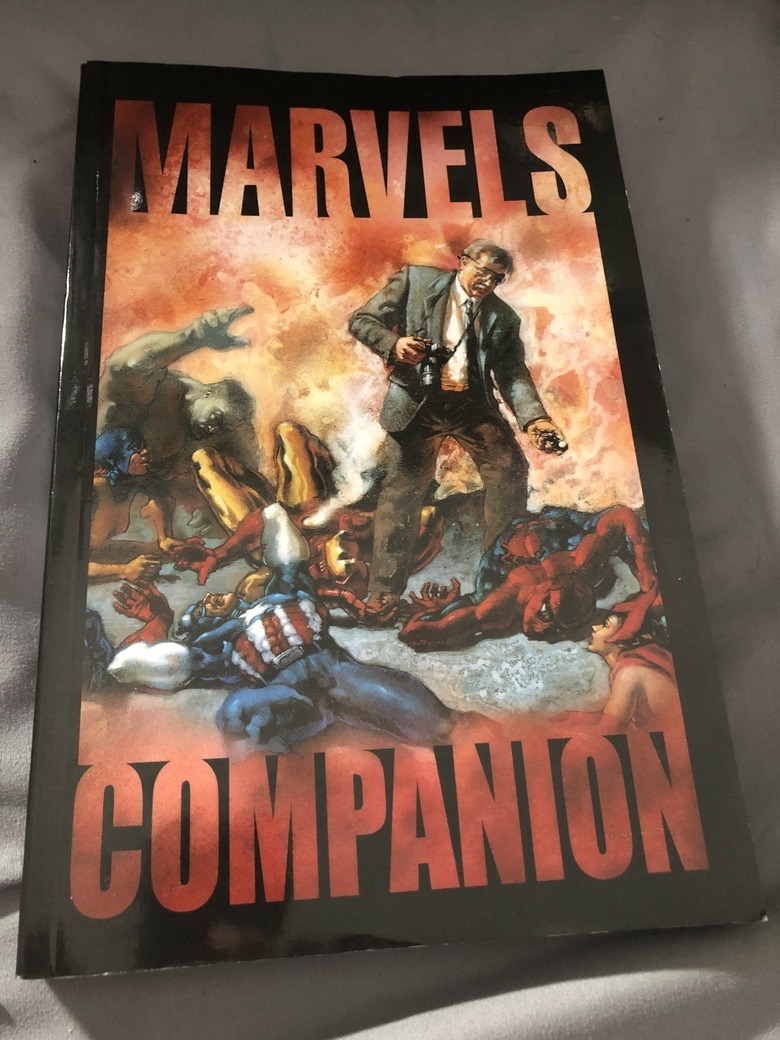 I mostly bought it because it collects the two issues of Ruins by Warren Ellis. Where Marvels was a generally optimistic and nostalgic look at the Marvel universe, in Ruins Phil explores a dark and cynical version of the Marvel universe. Most of the heroes have ended up dead, diseased, or otherwise worse off through the very circumstances celebrated in the comics. While I haven’t read any of the stories in the book, I had heard of this story. The book includes several other one-shots and mini-series. The three “Tales of the Marvels” mini-series take a similar, man-on-the-street approach to storytelling. Not entirely sure if it’s taking the same approach of revisiting existing events. “Blockbuster” shows a Silver Surfer battle from the pov of regular citizens. “Inner Demons” is told from the pov of an amnesiac Namor living among the homeless. “Wonder Years” tells a story from the pov of Wonder Man’s #1 fan. The last two stories don’t carry the Marvels name but retain the regular person pov. One, Code of Honor, follows a police officer in New York and the last one, Conspiracy, follows a reporter, I think, uncovering a massive conspiracy. In keeping with the style of Marvels, each story is painted, to varying degrees of success 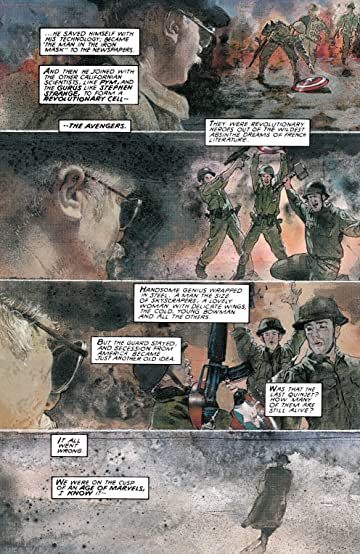 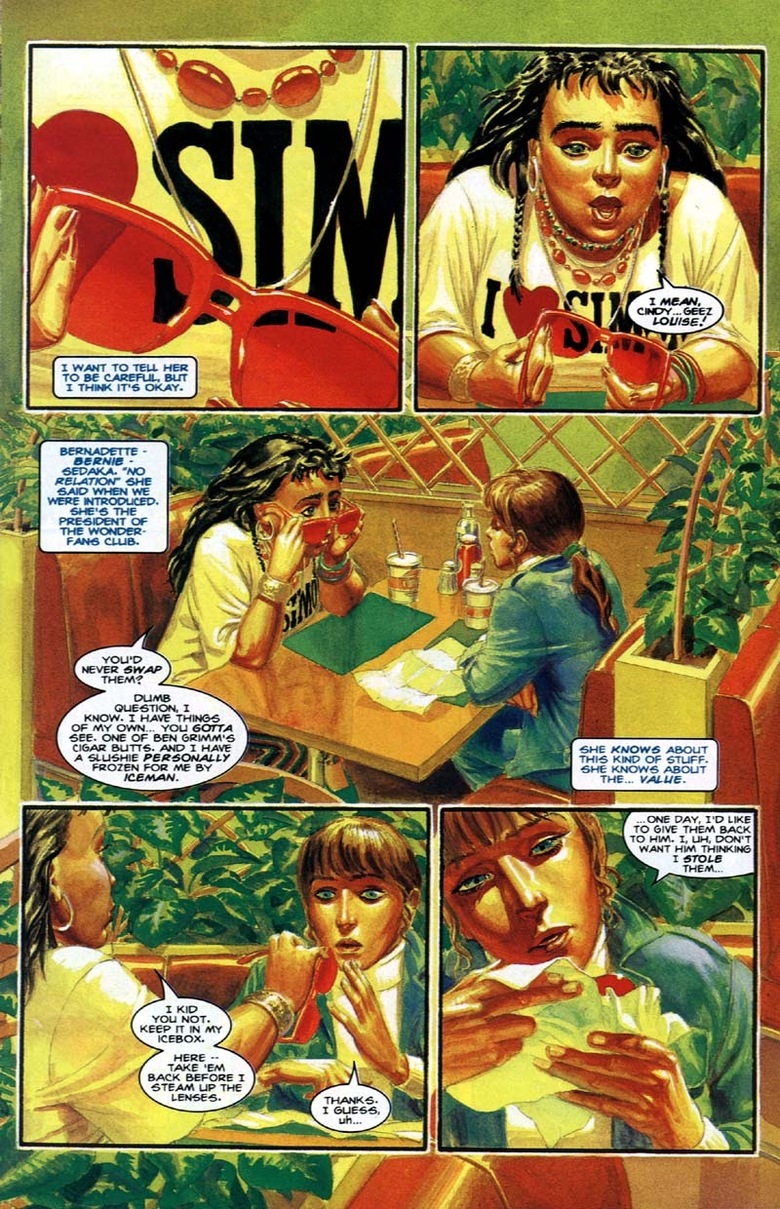  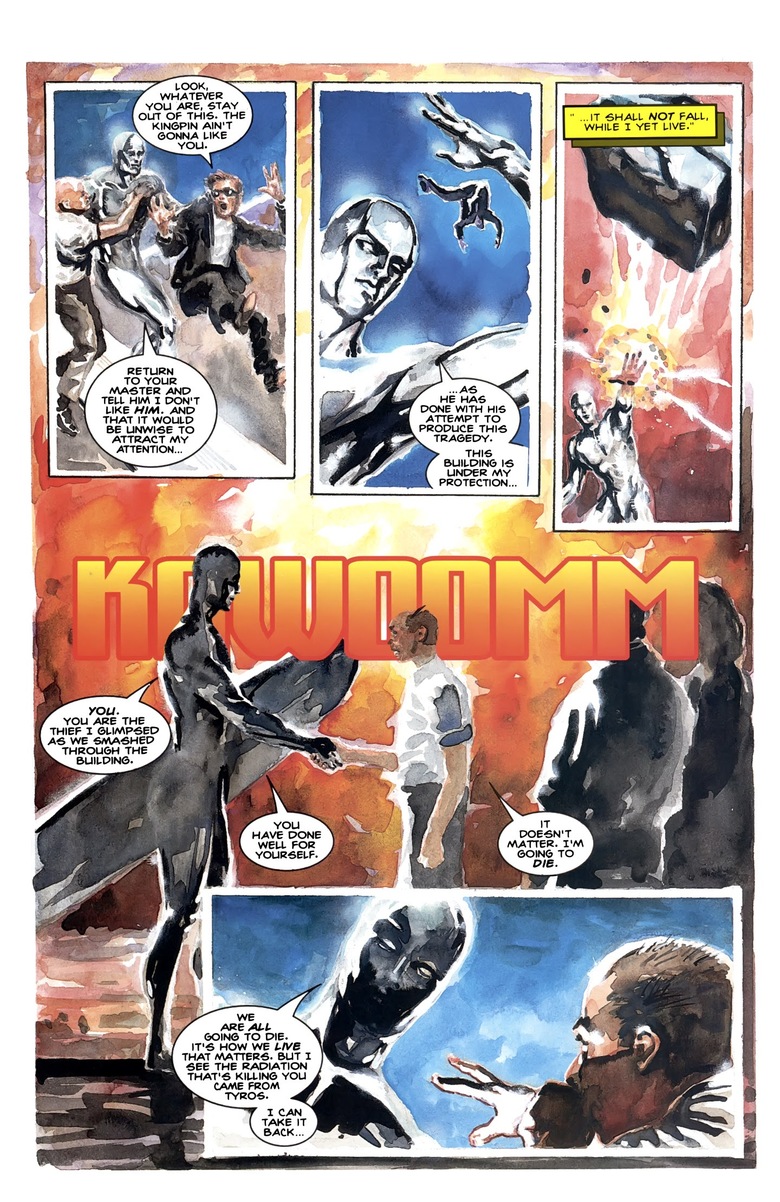 |
||
| Post 24 • IP flag post | ||
 If the viagra is working you should be well over a 9.8. If the viagra is working you should be well over a 9.8.
|
xkonk private msg quote post Address this user | |
| I've heard of Ruins too but not sure if I read it or not. If so, it's been a while. | ||
| Post 25 • IP flag post | ||
 COLLECTOR COLLECTOR
|
dielinfinite private msg quote post Address this user | |
| Issue 3 really feels like it is about the fickleness of the public around the Marvels. It reminds me a lot of when the public seems to consume and take some ownership over a celebrity’s public persona. It becomes less about who they are and what they do and instead everything just feeds into the public’s preconceived notions and expectations of the person while at the same time demanding of them. I think part of that also stems from a bit of burnout on the part of the public. Like yes, these people might save the city every other week but when it’s constantly making you late for work or wrecking your car your gratitude may begin to wear a bit thin. Phil seems to think the Marvels are getting a bit of a raw deal. While Phil’s point of view is certainly more measured than someone like J Jonah Jameson, it’s impossible to deny that his own view is also tinged by some bias. Phil does call them “Marvels” after all. Phil has become a bit obsessed with his work and through it, the Marvels. When the Avengers’ battle floods the city his first instinct is to grab his camera and go take photos. To serve as a “witness” as he would later say. Even leaving his family to do it. All of these elements collide when the Silver Surfer heralds the arrival of Galactus and the very real threat of the end of the world. My knowledge of Marvel history is not comprehensive but I would imagine this wasn’t the first world-ending threat but I also can’t think of any on this scale and certainly not one this public. The public view is obviously the main conceit of Marvels and that point of view keeps us at a distance of even from a huge world-ending calamity. In the face of the end of the world Phil once again grabs his camera and gets to work. However, it seems a futile endeavor when there might be no one alive tomorrow to read about what happened today. As Phil makes his way home he sees many manifestations of the peoples’ fear. Some think it will blow over and some spending time with family. Back in the city we see some of the public’s demand of the Marvels that they criticize and chastise every other day. We never hear the Fantastic Four as they work out how to repel Galactus but we do hear the public’s disappointment when the FF retreat after failing to stop the threat the first time. Once they do defeat Galactus the public goes right back to whipping them. That punk Parker is taking photos to smear Spider-Man, people are calling for the X-Men to be jailed, and even calling the crisis so many witnessed as a hoax. We do see a glimpse of Phil’s growth from the previous issue as he defends the X-Men the same as he does any of rhe other Marvels. On the art side, Ross does an amazing job bringing the coming of Galactus to life. The full page paintings make the events feel so gigantic because he has to place us so far away kist to be able to see it all. This nicely ties into the perspective of Marvels as a whole where these fantastic beings are at arm’s length to the everyday person that their humanity doesn’t always come through and they end up feeling larger than life: Quote: Originally Posted by xkonk In this case, it’s surprisingly consistent as all the events depicted were published in 1966. the X-Men/Nefaria event depicted is from X-Men #23. The Ka-Zar/Daredevil murder framing is from Daredevil #14. The comparison to Watchmen is interesting. I think the reason the two situations turn out so differently is because the world is in a different place in each. In Watchmen, mankind has basically turned on itself and is ready to destroy the planet. Ozymandias’ giant squid reframes the treat humanity is so ready to kill from something internal to something external and, unknown to them, non-existent. In Marvels we’re at the point where people are getting fed up with and a bit wary of heroes. Humanity isn’t ready to kill itself, i stead they are watching helplessly as these Marvels destroy it as a result of their own conflicts. So when Galactus arrives, though he may be an alien from far away, he’s, certainly an escalation of but not all that much different from the villains the Marvels are fighting every day. Yes Galactus may destroy the world but from the far away point of view of most of humanity, is he really that much different from Namor attacking Manhattan with a tidal wave? As for hidden Easter eggs and cameos, it should be pointed out that Spider-Man harassing Jameson is actually Kraven the Hunter trying to draw the real Spider-Man out. On Phil’s walk home Joe Sinnott and Jack Kirby (who would pass away weeks after the issue was released) are in a car and Stan Lee is seen in the restaurant where Phil is eating with his family at the end. |
||
| Post 26 • IP flag post | ||
 COLLECTOR COLLECTOR
|
dielinfinite private msg quote post Address this user | |
Monthly (Comic) Book Club - February - Fables: Legends in Exile & Animal Farm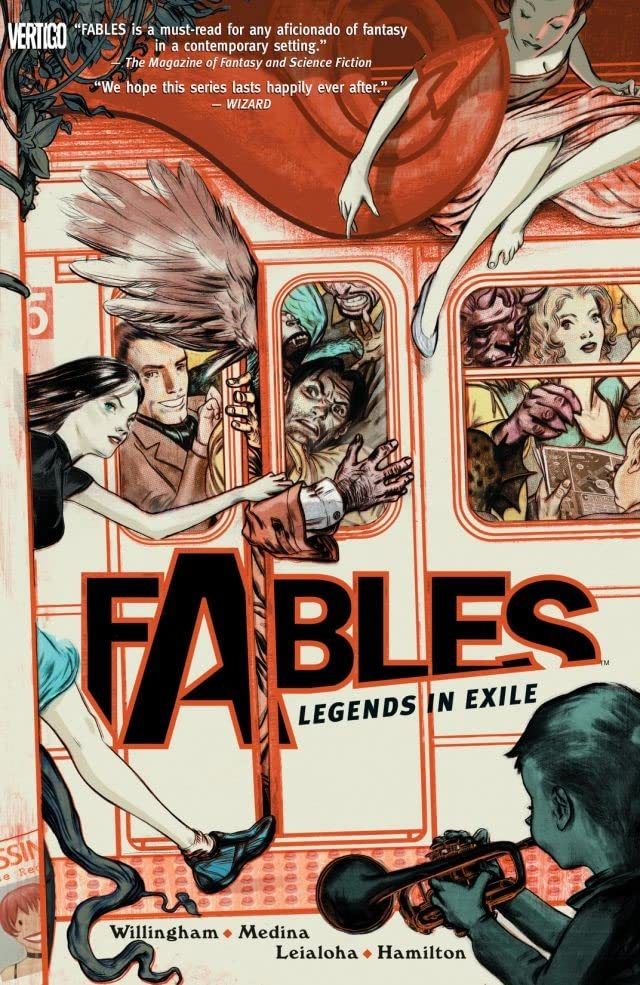 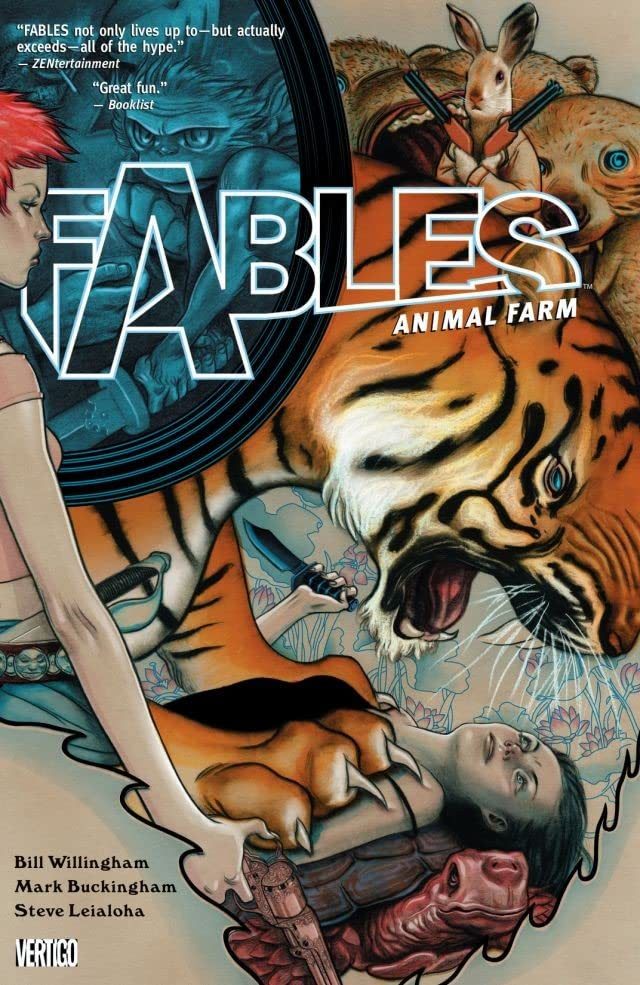 Fables #1-10 Week 1 (1/31-2/6): Fables #1-3 Week 2 (2/7-2/13): Fables #4-5 Week 3 (2/14/-2/20): Fables #6-8 Week 4 (2/21-2/27): Fables #9-10 |
||
| Post 27 • IP flag post | ||
 COLLECTOR COLLECTOR
|
dielinfinite private msg quote post Address this user | |
| Marvels 4 seemed very much a story about transition. Specifically we see it in the story of Phil’s personal life but on a more thematic level it is showing the change from the Silver Age to the Bronze age of comics. All around Phil is seeing a growing cynicism in the public’s relationship with the Marvels. It’s very much what we saw in the previous issue where heroes are criticized and harassed but when trouble comes the people cower in fear and pray that the Marvels will deliver them. Despite the success of his book, Phil wants to do more to fight for the Marvels in the arena of public opinion. He sees his opportunity in the case of Spider-Man who is being skewered in public because they believe he killed Captain Stacy. Phil is certain that he didn’t and he would show that to the world. As Phil investigates he comes across heroes like Luke Cage, sees Black Widow on tv, and photos of the Black Panther. All of these characters debuted in the Silver Age but had notable resurgences in the 70s as they could be seen to represent the social issues that would be prevalent in the 70s like the escalation of urban crime, second-wave feminism, and a rise in Black voices in world culture. The end of the Silver Age of comics is generally agreed to come with the death of Gwen Stacy. While heroes were never infallible, this was seen as a significant and shocking failure of the hero to “save the girl,” shattering a more idealized view of the world of comics. The girl would be saved and the villain would be sent to jail and the world would go on as normal. In this story, Spider-Man tries but still fails to save the most important person in his life. He probably unintentionally killed her himself. If he hadn’t she might still have died when she hit the water. And the villain? He’s not carried off to jail. Spider-Man unleashes his rage on him only for the Goblin to accidentally kill himself in a rather gruesome and vindictive manner. The more cynical perspective of the Bronze age did not happen overnight and Phil sees it himself from Luke Cage being a “Hero for Hire,” Black Widow’s criminal trial, and Spider-Man labeled a murderer in public. Phil is trying to hold on to the idealism of the past and finds that embodied in Gwen Stacy. Despite losing her father, after a while she didn’t think Spider-Man was a murderer. When Namor’s peaceful invasion strolled through New York she admired the fantastic majesty of it. As Phil witnesses the events of ASM 121 play out, Phil’s idealism dies with Gwen. Phil can’t bring himself to write the new book that would espouse the virtues of the Marvels because those old days died with Gwen. Phil says he can no longer write his book because he’s “seen too much” that it has brought him “inside it.” Phil can no longer appreciate the marvel of the Marvels because he has been immersed in them of so long that he understands them a certain way. A way that no longer exists. That said, the book is not all about the death of the old. The book introduces Phil’s assistant, Marcia. Throughout the book while Phil is laser focused on his crusade to rescue the past, Marcia is just as amazed and optimistic by what she sees now and in the future. Phil retires but that is not the end. He leaves it in Marcia’s hands to tells the stories of the next Marvels. As comics changed from one age to the next, not everyone liked the change but that’s not to say that the stories or the characters were worse. It is up to the next generation to carry things forward. The book even ends with Phil taking a photo with a young Danny Ketch, who would grow up to become Ghost Rider not in the Bronze age, but the Modern Age. So in that very last shot we see three generations of comics and comic lovers. Phil representing the formative Gold and Silver Years. Marcia representing the next generation, the Bronze age. And finally you have Danny representing an age of comics no one else has even imagined yet. While every issue of the series has had some amazing visuals, this one has had some of that have stuck with me for a long time. The Skree-Skrull war battle is probably the most action we’ve seen in the series. Though it may be lacking in the scale and apocalyptic overtones of Galactus’ invasion in the previous issue, this painting is just so densely packed with characters and action Giant Man seems to struggle to fit into the frame. There’s also something about that shot of Spider-Man climbing the Bugle’s window that I love. It’s simple but the composition of Spider-Man climbing an office window from the inside and the detail Ross renders, to the point that you see the outline of Spidey’s lips through his mask has just always felt so real. I think the main cameos worth pointing out in the shot of the Atlantean invasion, the blonde haired child is supposed to Alex Ross as a three-year old (as he would’ve been in 1973) being carried by his older brother. Also in the invasion are two ships very reminiscent of Archie, Nite Owl’s ship from Watchmen. If you look in the windows of the closer ship, one of the figures seems to have horns, ala Nite Owl. One an outfit similar to Silk Spectre. And alone in the other window a figure holding a gun, like the Comedian. Finally, the cab driver that Phil hires to chase the Green Goblin is John Romita Sr! |
||
| Post 28 • IP flag post | ||
 COLLECTOR COLLECTOR
|
dielinfinite private msg quote post Address this user | |
| The Epilogue is just that. Not a whole issue but more of an additional flourish to end the story. I think the epilogue emphasizes the theme of passing the torch that I had seen in the last issue of Marvels. While Marvels 4 took place right at the transition of the change, this Epilogue takes place a few years later. To further emphasize the idea of change and passing the torch we see the X-Men return. We saw as a new team back in Marvels 2 but they too have passed the torch and we see a new team with evergreen characters like Wolverine and Storm. The idea of passing on to the next generation is of course also seen in Phil’s life. While he mentions that he has come out of retirement the focus is really on his two daughters. Just as Phil did when he was younger, his daughters see the wonder of the Marvels, ironically the ones his father had feared and hated when he was younger. His daughters now run to see Storm light up the sky the way Phil would try to go see Namor or the Human Torch fight things out. In the interview at the end of the book Busiek says he feels this is a better ending to the story than the end of book 4, which ended on something of a dreary note with Phil angry at the loss of Gwen and of the era she represented. I definitely agree with this idea. To look at it another way, Marvels 4 made it feel like Phil had to give control for someone else to take up the reigns. The Epilogue has Phil back to work showing that you don’t necessarily have to be disenchanted and disenfranchised to allow the next generation to carry on. Phil also gets the chance to see things more from the perspective of the next generation and to understand the wonder they see in a world that had left Phil disenchanted. Marvels 4 tried to show that to an extent with Marcia. But we only saw Marcia reacting to photographs, not the living, breathing Marvels that captured Phil’s imagination. Even then, Phil was so distracted with his Spider-Man crusade that we never really got to see the wonder Marcia saw in the world. Finally, some more cynical readers would argue that Danny Ketch isn’t really worth remembering so the original ending was something of a damp squib. Of course writing in the early 90s Busiek couldn’t really predict Ketch's longterm popularity but I personally still enjoyed the reference. The epilogue basically reiterated the point Marvels 4 ended on but does so with a much more positive outlook and (with the benefit of hindsight) does so with characters with much greater staying power. |
||
| Post 29 • IP flag post | ||
 If the viagra is working you should be well over a 9.8. If the viagra is working you should be well over a 9.8.
|
xkonk private msg quote post Address this user | |
Quote:Originally Posted by dielinfinite That was my takeaway too, both from the reading itself as well as what Busiek said in the end interview. I'm hoping to remember to return to the epilogue after Eyes of the Camera, since chronologically it takes place somewhere in there. |
||
| Post 30 • IP flag post | ||
This topic is archived. Start new topic?
